The Consumer Price Index (CPI) in the National Capital Region (NCR) rose to 124.9 percent, showing a 0.4 percentage point increase from the previous month of 124.5 percent. The CPI displayed a year-on-year increment of 3.5 percentage points, from 121.4 percent compared to January 2024. Throughout this period, the NCR’s CPI consistently stayed below the Philippines' overall CPI, settling at 128.4 percent in January 2025, showing an increase of 0.7 percentage point from 127.7 percent in December 2024.
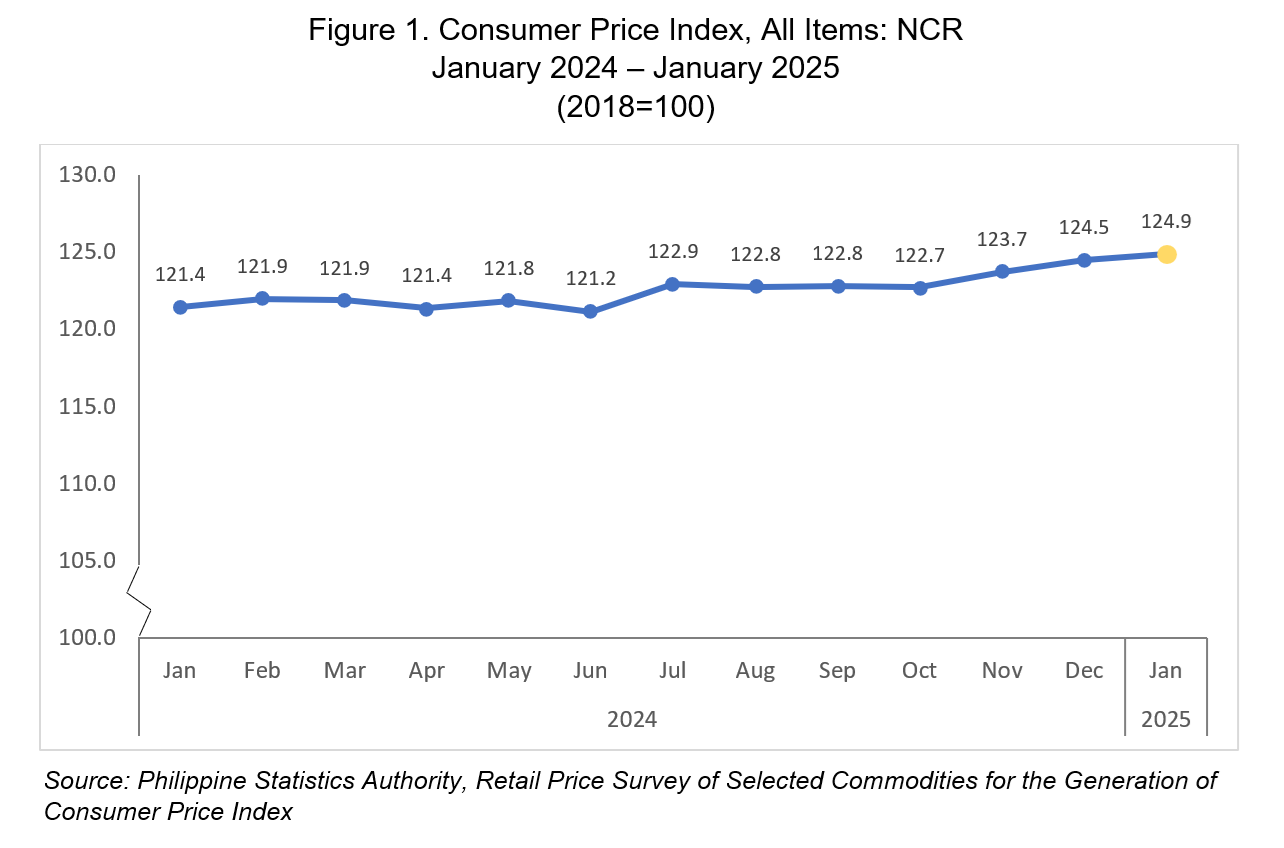
Inflation rate in NCR slows down to 2.8 percent
The inflation rate in NCR slowed down to 2.8 percent from 3.1 percent in the previous month, marking a decline of 0.3 percentage point in January 2025. In January 2024, the inflation rate in the region was also recorded at 2.8 percent. (Figure 2)
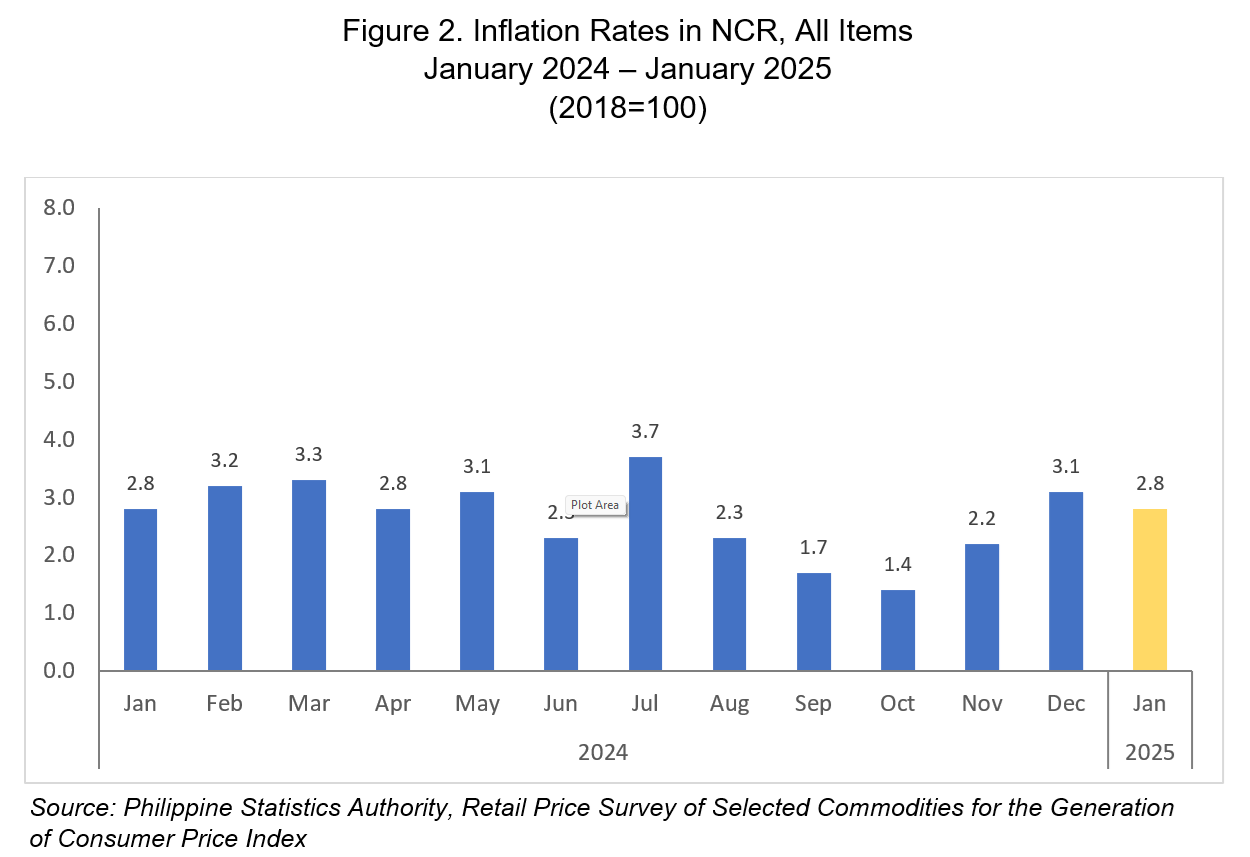
At the national scale, the headline inflation rate for the Philippines remained at 2.9 percent from December 2024 to January 2025.
Inflation increased in eight (8) regions across the country. The Bicol Region (Region V) and the Cordillera Administrative Region (CAR) recorded the highest inflation increases, with 0.8 percentage points. This was followed by the Cagayan Valley Region (Region II), with a rise of 0.5 percentage points.
Housing, water, electricity, gas, and other fuels drive down inflation in NCR
The decline in inflation in NCR was primarily driven by lower prices in housing, water, electricity, gas, and other fuels, which recorded a decrease of 0.8 percentage points to 2.2 percent in January 2025. This accounted for approximately 66.0 percent of the overall slowdown in inflation for the month.
The restaurants and accommodation services commodity group came as the next primary contributor to lower inflation in the region as it decelerated to 1.7 percent during the month from 2.2 percent in the previous month and was followed by the index of personal care, and miscellaneous goods and services which decreased to 2.3 percent in January 2025 from 2.7 percent in December 2024.
Furthermore, lower annual decrements during the month were observed in the indices of the following commodity groups:
a) Clothing and footwear, 1.2 percent;
b) Furnishings, household equipment and routine household maintenance, 0.7 percent;
c) Health, 1.8 percent;
d) Information and communication, 0.1 percent;
e) Alcoholic beverages and tobacco, 2.6 percent;
f) Recreation, sport and culture, 0.7 percent; and
On the other hand, higher annual increments during the month were observed in the indices of transport at 0.2 percent and education services at 2.5 percent, while financial services recorded a zero percent annual rate in January 2025. (Table 1)
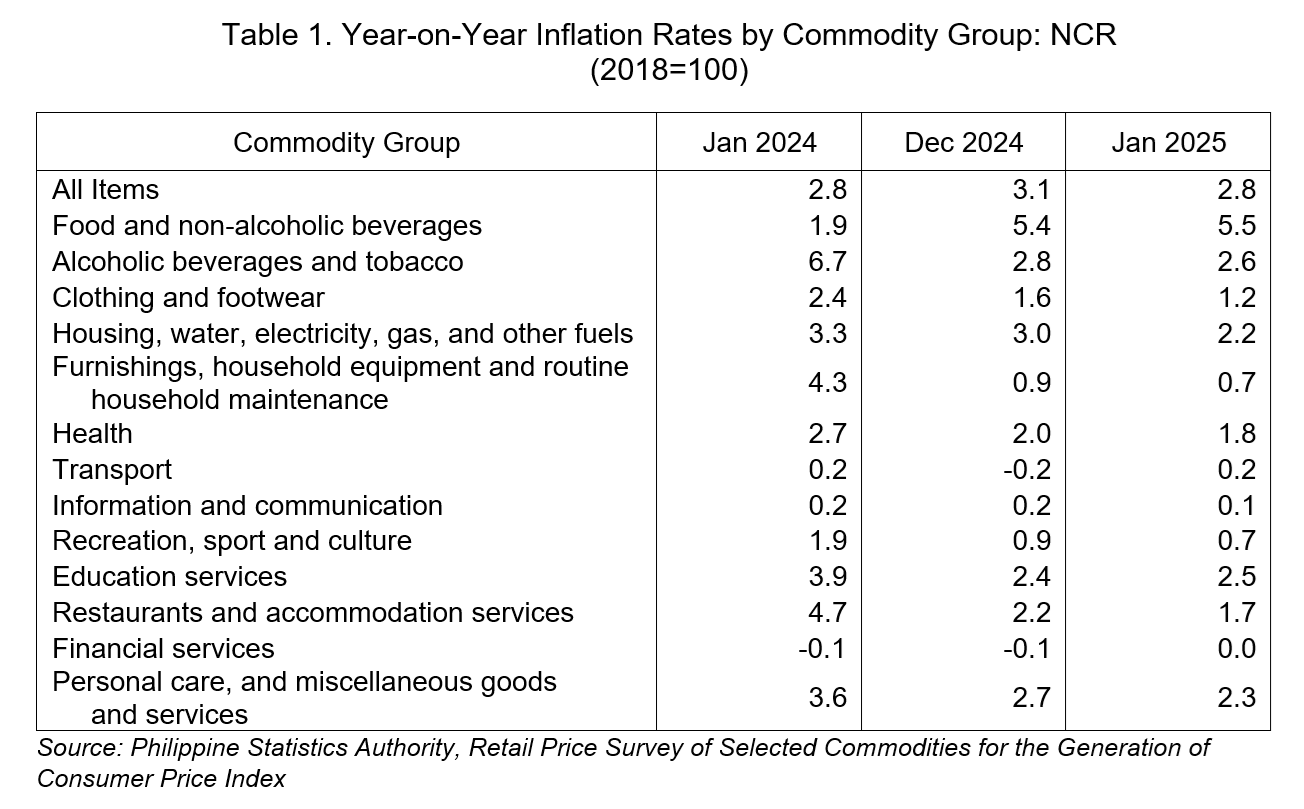
Inflation of food increases to 5.8 percent
Food inflation increased to 5.8 percent in January 2025 from 5.6 percent in the previous month, recording an increase of 0.2 percentage point.
The main contributor to this increase was the higher inflation in fish and other seafood, which rose from 1.4 percent in December 2024 to 4.4 percent in January 2025. Additionally, meat and other slaughtered land animals saw inflation rise from 6.7 percent to 7.7 percent, and the commodity group of Milk, other dairy products and eggs registered higher inflation from 1.3 percent in the previous month to 2.4 percent in January 2025.
Additionally, the following food commodity groups also exhibited higher inflation during the month:
a) Ready-made food and other food products n.e.c., 3.6 percent; and
b) Oils and fats, -1.6 percent
Meanwhile, the following food commodity groups observed a downtrend in inflation this month:
a) Corn, 19.8 percent
b) Rice, 0.7 percent;
c) Flour, bread and other bakery products, pasta products, and other cereals,
0.9 percent;
d) Fruits and nuts, 6.8 percent;
e) Vegetables, tubers, plantains, cooking bananas and pulses, 25.7; and
f) Sugar, confectionery and desserts, -1.5 percent
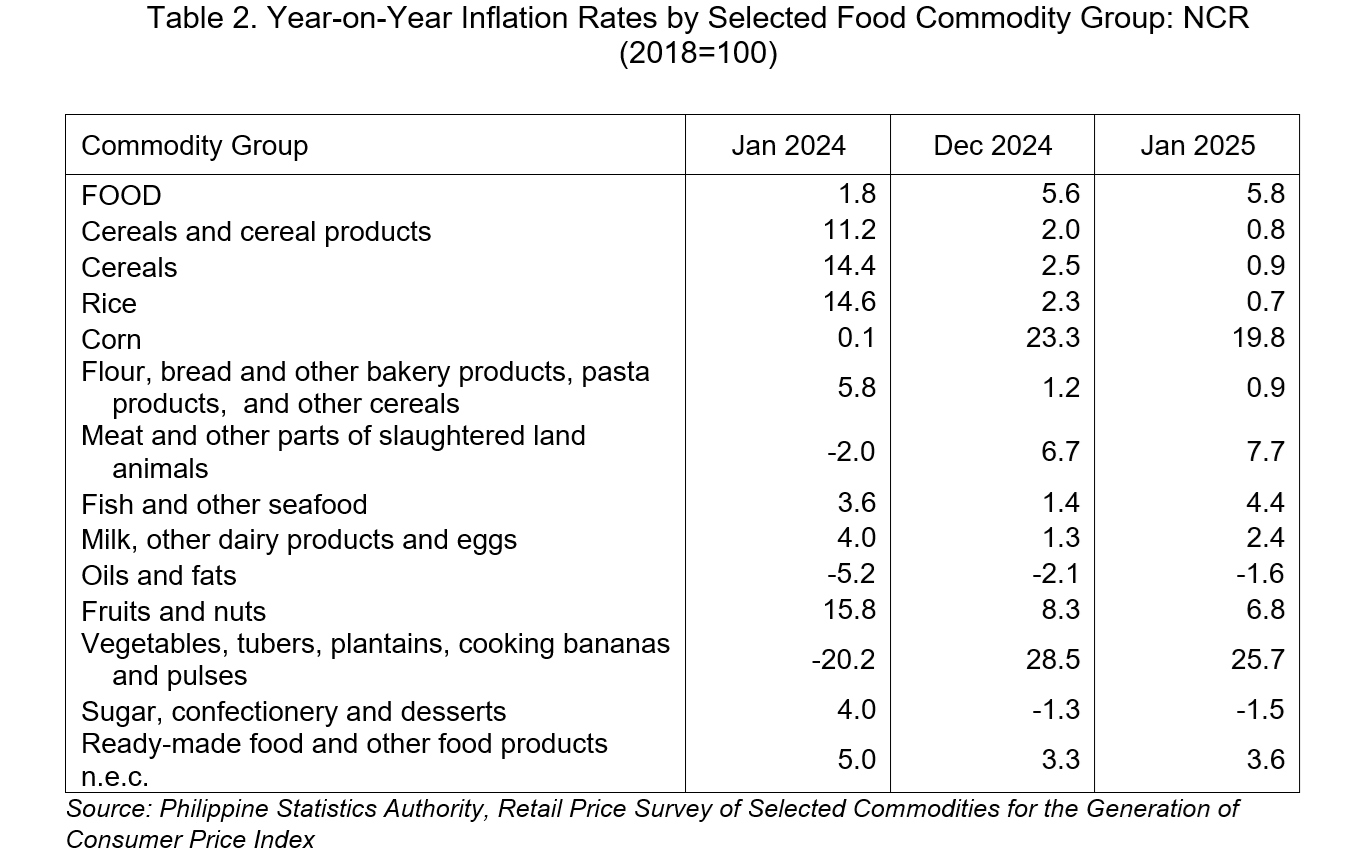
Peso retains purchasing power at 0.80
The PPP measures the real value of the peso in a given period relative to a chosen reference period. It is computed by getting the reciprocal of the CPI and multiplying the result by 100. The PPP is inversely related to the CPI; thus, an increase in the CPI will result in a decrease in the PPP.
The purchasing power of the peso (PPP) in NCR remained at 0.80 in January 2025, the same as in December 2024. This indicates that in January 2025, the amount of goods and services that could be bought for PhP1.00 is equivalent to what PhP0.80 could be purchased in 2018. A year ago, in January 2024, the PPP was slightly higher at 0.82, reflecting the gradual loss of the peso's purchasing power over time.
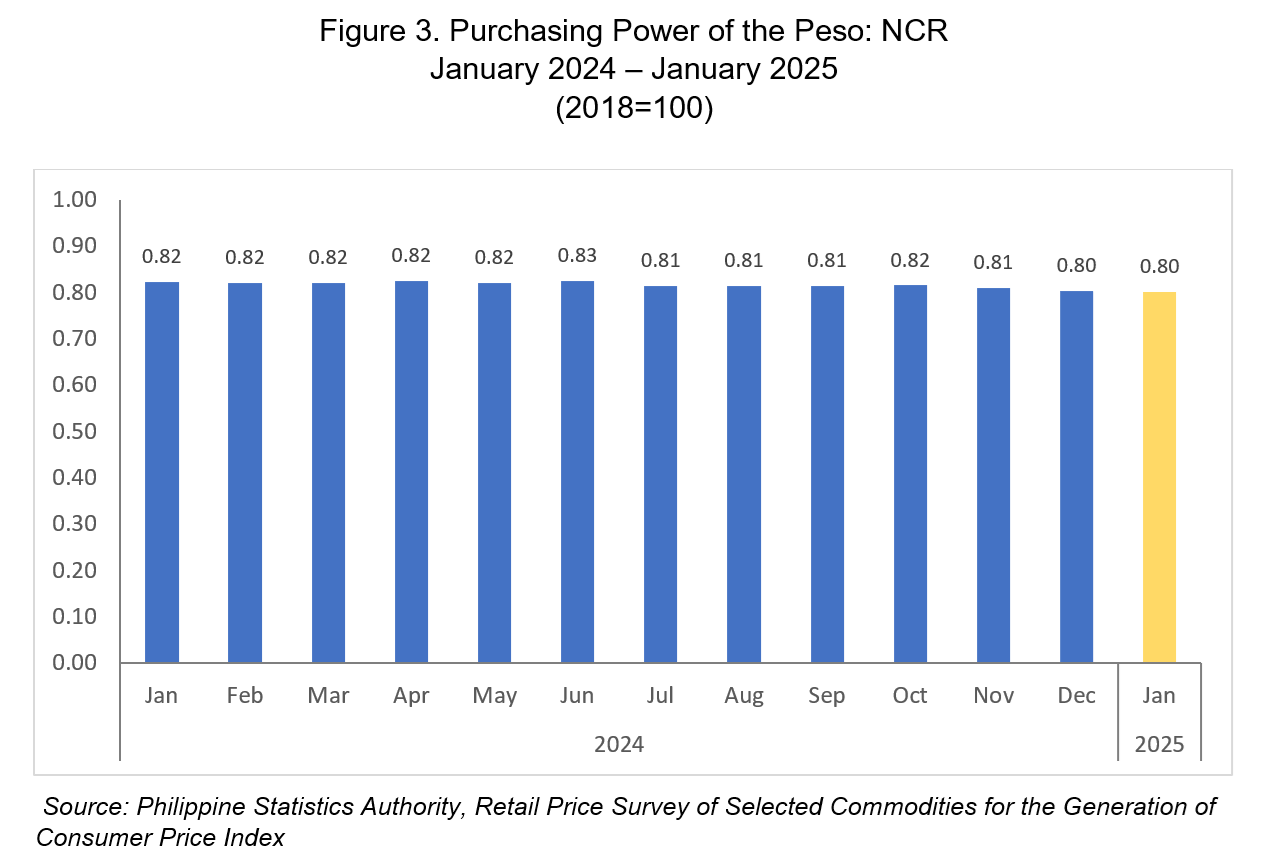
PACIANO B. DIZON
Regional Director
